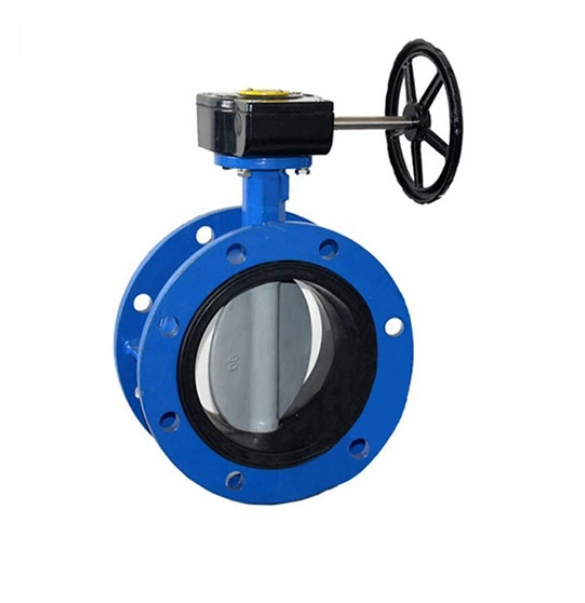GGG50 refers to a specific grade of ductile iron, also known as nodular or spheroidal graphite iron. Butterfly valves constructed with GGG50 material are designed to handle a range of temperatures and pressures in fluid handling applications.
Here’s how GGG50 butterfly valves are generally suited to applications with varying temperatures and pressures:
- Temperature Range:
- GGG50 ductile iron has a relatively high melting point and can withstand a wide temperature range. Butterfly valves made from GGG50 material are suitable for applications where temperatures may vary, including both moderate and elevated temperature conditions.
- Pressure Resistance:
- Ductile iron, including GGG50, possesses good strength and pressure resistance. Butterfly valves made from GGG50 material are capable of handling varying pressures within their specified pressure ratings. The valves are designed to maintain structural integrity and sealing under different pressure conditions.
- Corrosion Resistance:
- GGG50 ductile iron exhibits better corrosion resistance compared to standard gray iron. While it may not be as corrosion-resistant as some other materials like stainless steel, the composition of GGG50 makes it more resistant to corrosion than gray iron. This is particularly advantageous in applications where varying temperatures and pressures may be accompanied by corrosive media.
- Thermal Expansion and Contraction:
- GGG50 butterfly valves are designed to accommodate thermal expansion and contraction associated with varying temperatures. The ductile nature of the iron allows the valve components to flex without losing structural integrity, helping to prevent issues such as cracking or distortion.
- Sealing Performance:
- The seating material and design of the butterfly valve contribute to its sealing performance across different temperature and pressure conditions. Properly selected elastomeric or resilient seat materials ensure effective sealing, even when the valve is subjected to temperature fluctuations and varying pressures.
- Compliance with Standards:
- GGG50 butterfly valves are manufactured according to industry standards and specifications. These standards often include guidelines for temperature and pressure ratings. Ensuring compliance with these standards guarantees that the valves are suitable for the intended operating conditions.
- Material Stability:
- GGG50 ductile iron provides good material stability under varying conditions. This stability contributes to the overall performance of the butterfly valve, ggg50 butterfly valve ensuring that it maintains its structural integrity and functionality across different temperatures and pressures.
- Suitability for Water and Fluid Applications:
- GGG50 butterfly valves are commonly used in water and fluid handling applications. These valves can be employed in municipal water systems, industrial processes, and other fluid transport systems where temperatures and pressures may vary.
- Thermal Insulation:
- Ductile iron has moderate thermal conductivity. In applications where thermal insulation is a concern, additional measures such as insulating materials or coatings may be applied to manage temperature variations and prevent heat transfer to surrounding components.
It’s important to note that the specific temperature and pressure ratings of GGG50 butterfly valves may vary based on factors such as the valve’s design, configuration, and the elastomeric materials used for seating. Users should refer to the manufacturer’s specifications and guidelines to ensure that the valves are suitable for the intended operating conditions in their specific applications. Additionally, consulting industry standards and considering any additional environmental factors is advisable for proper valve selection.
